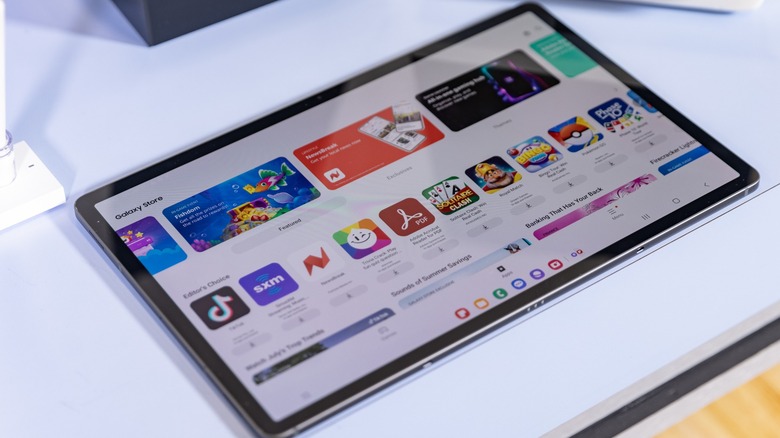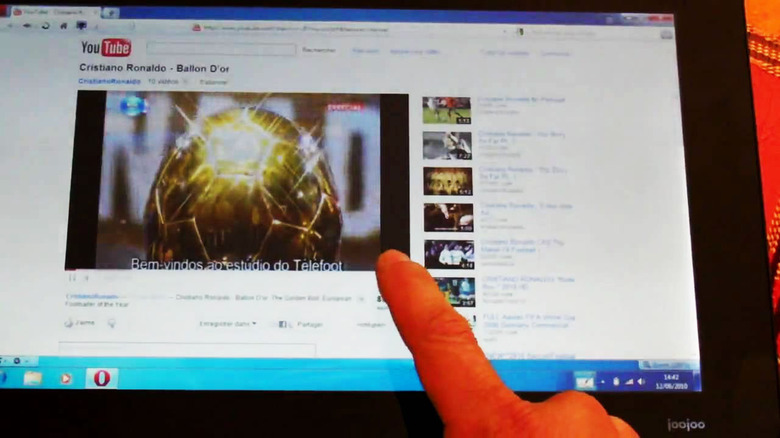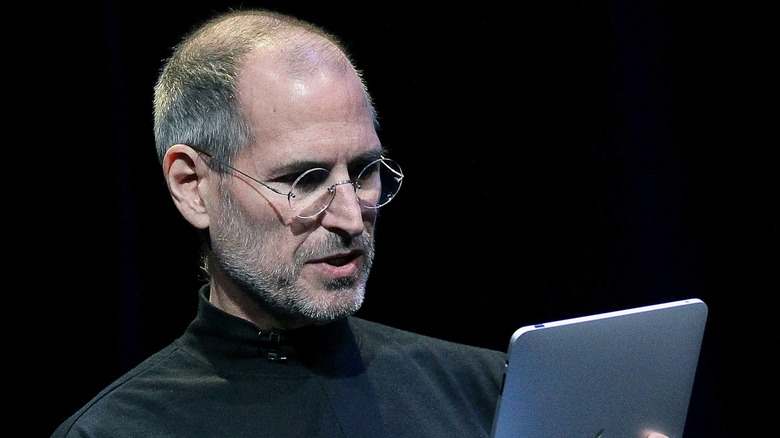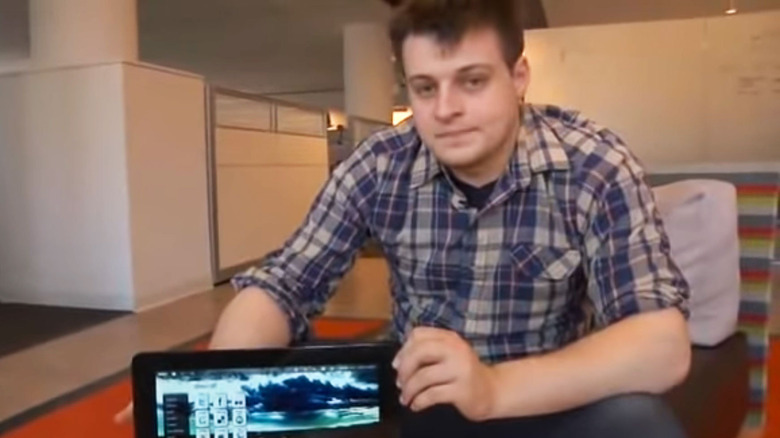JooJoo: The Tablet That Beat Apple To Market, Only To Be Discontinued
In the smartphone category, Apple is widely recognized as one of the titans of the industry. Maintaining a global market share of over 20%, and an over 50% market share in the U.S., it is the most popular phone brand in America. However, the iPhone isn't the only product that has made the company so successful, as the Apple iPad has also gained wide appeal. Originally launched in April 2010, and selling over one million units just a month after release, the iPad has maintained its status as one of the most popular tablet brands in America as well.
However, it might come as a surprise to some that the initial Apple iPad launch actually faced some stiff competition. Another tablet that, at least at one point, the tech community thought could be an early disruptor in the space. That device was called the JooJoo, and had a very successful marketing campaign at the time, which eventually led to one of the most catastrophic launches in tech history.
As a failure, the JooJoo ranks amongst the most interesting stories of a hardware company that seemingly couldn't get anything right. While it was a first-market-entrant, it exists as a cautionary tale of what poor business practices and decisions can do to an otherwise great idea.
What was the JooJoo tablet?
Produced in Singapore by a company called Fusion Garage, the JooJoo was a Linux-based tablet that was released on March 25, 2010, only to be discontinued a little more than six months later, on November 11, 2010. Originally called the CrunchPad, the tablet was created by Michael Arrington, founder of TechCrunch, who started development on the project in 2008 and aimed to create a lightweight web-based tablet marketed at a low price point to the masses.
From the start, however, there were problems. Just a little under a year into development, the CrunchPad team teamed up with Fusion Garage and its CEO, Chandra Rathakrishnan, which seemed to go well at first. A new Prototype C was created, featuring a sleek, minimal hardware design and boasted a Linux-based operating system. Early iterations of the hardware resonated with the tech community.
However, cracks started to form by the end of July 2009: The company announced that the tablet would not sell at $200 as originally planned, but $400 (eventually, the tablet would debut at $500). The project was also subsequently delayed with little to no communication from the company to the public.
While prototypes did receive positive feedback from media at the time, problems within the organization would begin brewing. This eventually led to the fallout of the partners and the CrunchPad being re-branded as the JooJoo, as Arrington was removed from the project and refused to provide the hardware with any media or exposure.
What went wrong with the JooJoo?
As the saying goes, timing is everything: On January 27, 2010, Apple CEO Steve Jobs unveiled the new iPad, undercutting the innovation that caused the JooJoo to excite the tech community so much in the first place. With the eventual release date of the JooJoo being delayed to March 25, 2010, and the iPad release date coming just a week later on April 3, 2010, it all but spelled doom for the relatively unknown Singaporean company.
However, it would be disingenuous to say that Apple caused the entire demise of the JooJoo, though it likely played a role in its horrid preorder sales. As revealed in court filings on TechCrunch after the doomed release of the product, Fusion Garage managed to sell a mere 90 pre-orders of their product, with 15 of the tablets later being returned. According to reports at the time, initial figures were around 64 total JooJoo tablets sold shortly after the preorder period. The company would later stop releasing sales figures.
Behind the scenes, things were even worse somehow. The original creator of the project Michael Arrington, being completely ousted from the company and product launch by Fusion Garage, claimed the CrunchPad as their own. This would lead Arrington to file a lawsuit for Fraud and Deceit, as well as a litany of other charges. Eventually, poor sales combined with lawsuits caused Fusion Garage to go bankrupt and owe creditors $40 million.
The JooJoo failed in every way
Regardless of the inner turmoil behind the curtain or Apple's behemoth presence, the JooJoo was bound to fail because it just wasn't that great of a tablet. While initial boot times for the device were impressive, actual performance once the device turned on was miserable.
As a web-only tablet, things didn't run smoothly. Functionality for certain sites, like YouTube and Hulu, was unreliable at best and broken at worst. Pages would not responsively react when tilting the screen, and performance was often choppy or laggy. The actual responsiveness when pressing the buttons was poor, and because it lacked any onboard storage, the utility of the device was very limited.
That being said, not everything was bad. JooJoo's web-only operating system and attempt at a minimalistic hardware profile would eventually influence modern devices like the Chrome Book, though the performance of that device far outweighs the JooJoo tablet in every respect.
However, that all being said, none of the great ideas were good enough to overcome the internal issues the company suffered from, nor the poor execution or performance of the tablet itself. Sadly, or maybe not, the JooJoo will go down in history as another piece of failed tech hardware promising great things — but being unable to deliver.



